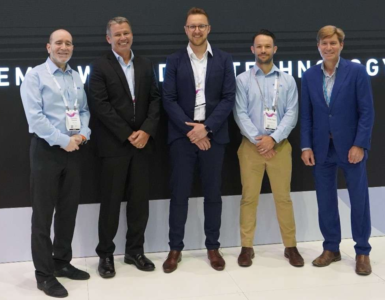New Study Looks to Strengthen Global Hydrogen Supply Chain.
Researchers from the University of Technology Sydney (UTS) have developed a new supply chain model with the potential to make hydrogen a viable global player in the future of renewable energy. International demand for hydrogen is set to grow sixfold by 2050 to help achieve net-zero climate targets. Yet, hydrogen requires complex supply chains in order to be transported over long-distances. The infrastructure needed simply doesn’t yet exist. According to the new supply chain model — recently published in the journal Energy Conversion and Management — using methanol as a hydrogen carrier is the most affordable method of shipping hydrogen.
Comparing supply chain options
Associate Professor Khalilpour from UTS and lead author of the study:
🔥 What about we co-host a webinar? Let's educate, captivate, and convert the hydrogen economy!
Hydrogen Central is the global go-to online magazine for the hydrogen economy, we can help you host impactful webinars that become a global reference on your topic and are an evergreen source of leads. Click here to request more details
As a case study, we have investigated eight supply chain options composed of two electrolysers (alkaline and membrane) and four carrier options (compressed hydrogen, liquefied hydrogen, methanol, and ammonia) for export from Australian ports to three destinations in Singapore, Japan, and Germany.
Hydrogen itself of course isn’t an energy source. It’s an energy carrier that can either store or transport a huge amount of energy. Methanol and ammonia are effective carrier fuels that can be derived from renewable hydrogen. It’s typically easier to transport methanol and ammonia than it is hydrogen as they don’t need to be kept at such low temperatures.
Green methanol: the cheapest option
The researchers concluded that hydrogen converted into methanol form had the highest energy density, and was most affordable to manufacture and ship (costing $8.87 per kilogram of hydrogen delivered). In second place, liquefied hydrogen was the next cheapest option (costing $9 per kilogram of hydrogen delivered). In fact, methanol was found to store the highest amount of energy for all supply chain pathways, which is, of course, good news when exporting renewable energy. That said, compressed hydrogen was found to have the highest hydrogen content. The researchers think the reason for this may be that the act of compressing and transporting hydrogen causes it to lose energy.
Transport was also highlighted as the biggest influence on the production cost of hydrogen across all supply chain pathways — regardless of the state it was delivered in.
Associate Professor Khalilpour from UTS and lead author of the study:
“Surprisingly, the analysis revealed that it matters whether the goal is to export ‘hydrogen the atom’ or ‘hydrogen the energy.’ Each choice leads to a different supply chain system. Therefore, a thorough understanding of the whole system is necessary for correct decision making,”
Efficient supply chain design will make hydrogen economic
“The abundance of renewable energy resources in Australia, as well as its stable economy, means the country can attract investments in building these green value chains in our region and even as far away as Europe”, Professor Khalilpour also notes.
For example, in Australia, Emerson, an American technology and engineering company, recently partnered with Melbourne-based hydrogen start-up, Cavendish Renewable Technology, in order to together bring hydrogen electrolysers and ammonia processing equipment to market. Both businesses are committed to producing green hydrogen at scale and at affordable prices with the ultimate aim to create a greener, cleaner future world. Building a business relationship on shared perspectives, values, and goals is one of the best ways to forge a profitable and strong partnership. So it looks like this pairing will be a success.
“The key business question around the emerging hydrogen economy is whether commodities such as green hydrogen, methanol or ammonia can be exported profitably and competitively also over long distances and across the oceans, thus bringing green energy to other places in the world”, adds Professor Khalilpour. Indeed, hydrogen already holds great potential for diversifying energy sources and can make it easier for countries to secure a reliable long-term green energy supply. It’s also set to play a key role in reducing carbon emissions.
Professor Iftekhar Karimi, from the National University of Singapore, and co-head of the study:
Our model suggests that methanol shows great promise as a chemical carrier for exporting renewable energy from Australia at low costs.
Indeed, this research certainly shows great promise to strengthen the global hydrogen supply chain, and it can help successfully pave the way for a greener, low-carbon future world.
READ the latest news shaping the hydrogen market at Hydrogen Central
New Study Looks to Strengthen Global Hydrogen Supply Chain.








